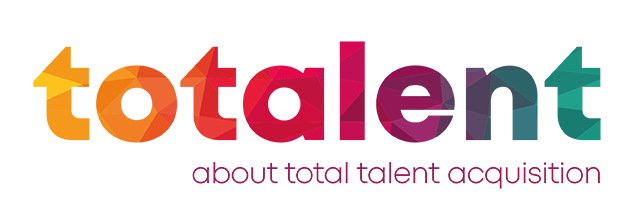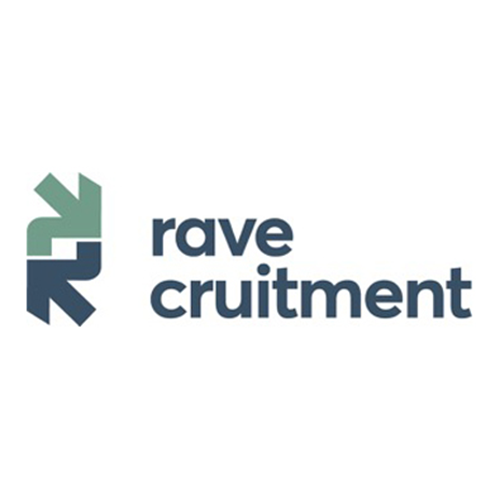
-
Invest in Capacity Building
- Your team: Invest in capacity building to convert insights from labour market analyses including eg. international talent perception studies into your (digital) talent attraction activities. Think of skills and expertise relating to topics like digital marketing, cross-cultural communication, trends analysis & scenario thinking and data science: from data gathering, curation and analysis to building a convincing storyline and visualisation to support decision-making.
- Data: Invest in Talent Intelligence: insights into the international labour market developments, international talent perception studies and country sheets including:
- Cultural traits: Align labour market communications and support facilities with the culture of the target countries.
- Most used platforms for job search: Determine the job search platforms most frequented by your target demographic to refine your digital outreach efforts
- The main educational institutes delivering the profile sought after: Identify the primary universities and applied sciences institutes generating the desired talent profiles.
- Data: Validate quantitative studies with qualitative research (interviews, panels, etc).
-
Define the Value Proposition for Professionals
To be able to successfully execute a talent attraction campaign, a full understanding of and identification with the place brand is essential. The place brand used to attract businesses or tourists needs to be tailored to attract talent.
- Take time to finetune the value proposition of your Place for professionals:
- The software: Highlighting emotional selling points that resonate on a personal level
- The hardware: Showcasing what the Place offers in terms of industry and career development opportunities
- The brainware: Promoting available jobs and benefits
- Next step is to customise the value proposition for the specific target group, eg. STEM professionals. Identify:
- What are the unique industry and technological developments that position your country or region as a unique hotspot? What sets you apart from others with similar reputations in this field? What innovations or aspects of the ecosystem are extraordinary?
- What features will uniquely appeal to specific nationalities, utilising the insights from perception studies?
- Focus on highlighting assets perceived as most relevant and attractive by the target group (not you!), avoiding commonalities and emphasising the potential for crafting distinctive and interesting career paths.
- Leveraging the place brand in targeted activities necessitates collaboration with those managing the national or regional/city brand. Drawing inspiration from global best practices can offer valuable insights without the need to start from scratch.
Remember, place branding is a strategic, long-term endeavour. Shifting deeply rooted perceptions about your Place is a gradual process and not something that can be done overnight. It requires a strategy that accounts for that long-term vision, that will continue to engage your stakeholders, and that will deliver tangible returns for your place.
-
(Digital) Attraction Campaigns – Ingredients
3.1 (Micro-)targeting[1]
What people to target? Invest time in a clear target group definition. The more precise the definition, the bigger the chance to reach the ‘right ones’ and convert interest into candidates for the employers in the country/region.
Must have parameters:
- What are the most sought-after profiles in the domain you focus on?
What (sub-)profiles? For instance, rather than a broad category like “software developers,” specify whether the need is for front-end or back-end developers.
Use labour market data to identify trends and predict future demands.
- Level of experience: juniors, mid-career or senior workers?
Agree on a clear definition as, depending on the field of expertise, ages may differ to qualify as mid-career or senior.
- Eligibility criteria: Are the (majority of) employers in your country/region open to both EU and non-EU candidates?
- Educational qualifications required: Masters’ degree only or Bachelors qualify too?
- Other hard and soft skills: must-haves, nice to haves?
- Specific language requirements?
Based on the target group definition and talent data we assembled, personas are configured. A persona is the description of a set of typical characteristics of a person fulfilling the targeted profile including their drivers, hard and soft skills.
What countries to target? Target countries that have proven ‘good providers’ (in numbers and quality matches) in recent years are popular to target. Choosing countries based on the availability of skills that are the fastest growing in demand is a valid criterion as well. Thirdly, the more ‘unusual suspects’, eg. (developing) countries that show structural growth. History shows that these countries produce migration waves. The same applies to countries in crisis. This idea is not new – think of refugees from war. To enable these talents to enter the labour market we need to invest in facilitation in terms of legislation, onboarding and training and retention in the longer term.
- Determine which countries show a maximum reach for the specific profile you’re after by doing an analysis in the social media channels that are most popular for job searches. You may discover sources that are not top of mind yet.
What channels/platforms to use?
Most used platforms for job search differ per country (LinkedIn, Google, Facebook, Instagram, Tiktok e.d.). In the Netherlands eg. LinkedIn seems to be an indispensable platform for the recruiter.[2] But in the rest of Europe, it is not that important at all.
If you look at the whole of Europe, LinkedIn only has a small position. About 80% of the respondents don’t even mention the platform at all when asked about their favourite apps for job search. For specific countries or profiles, it is therefore better to use the local champions (job boards and CV databases) or expert platforms with a more targeted audience, such as Github, for software development.
3.2 Content
- Create compelling copy/text, visuals, video content and formats for the strategically chosen channels. ‘Compelling’ is in the eyes of the beholder (not yours). To ensure relevance and engagement, promote assets only when they align with the drivers of your target demographic. Apply consumer psychology and cultural knowledge to understand what type of content resonates with specific groups or nationalities.
- If you know which employers are searching for the specific profile, ask permission to use their logos.
- Engage with internationals – from the countries you’d like to target – to review and validate your campaign content. Their insights will enrich the appeal of your messaging, ensuring it resonates well with the intended audience. Encouraging these individuals to take on an ambassador role can further amplify your campaign’s credibility. The persuasive power of peers/fellow countrymen and women far exceeds the ‘marketing speech’ of representatives of the host country.
3.3 Budget and Planning
The amount of budget to purchase advertisements plays a critical role in shaping the timeline and scale of your campaign. Procuring ads however, is not an exact science, multiple factors come into play. These variables include but are not limited to, the chosen platforms and the algorithms that govern them. Monitor actual spending (on a daily basis) to prevent surprises.
- Prioritise flexibility in your budget to allow for adjustments as the campaign progresses. Initial plans may need to be revised based on early performance indicators.
3.4 Team and Tech
- Successful campaign strategy and execution hinge on a multidisciplinary team and experience show you need to allocate resources to at least the following roles:
- Project manager
- Dev ops: to set up, test and operate the tech stack
- Digital marketeer; define strategy and daily fine-tuning based on campaign data
- Copywriter + designer
- Talent liaison to reach out and activate talent.
- Take time to do your preparations well: defining the campaign strategy, delivering the first set of content (ads) and setting up the tech stack. The deciding phase, however, follows upon campaign launch. Daily optimisation, driven by performance data, is where significant time investment yields results. Campaign outcomes should inform continuous improvement, including updates to the country sheets for future initiatives.
- As regards the technology: keep it simple:
- Lean landing page. The page is key in converting interested talent into candidates. Upon clicking on one of the ads spread via social media, the person is led to the page. Its content should be concise, focusing solely on one goal: invite the person to leave some personal details behind. The call to action (CTA) could be “If you’re interested in career opportunities in X, please answer these questions”.
- Data collection tools: Use a simple script for a form or chatbot (conversational technology) to collect personal data minimally required to filter and pre-qualify candidates.
- Applicant tracking: A straightforward Applicant Tracking System (ATS), even if as basic as an organised Excel spreadsheet, can efficiently manage candidate data within the ‘talent pool’.
- Analytics: Ensure analytics tools are in place and tested prior to the launch of the campaign, to track performance and gather actionable insights.
3.5 Data and a Human Touch
A data-driven approach is key in operations: finding, activating and turning interested talent into applicants. Knowing – instead of estimating – the target group, their drivers and distractions, and the countries and platforms where they can be found, significantly enhances conversion rates, return on investment (ROI), and overall candidate experience.
A data-driven approach is key in talent attraction management too. Define your KPIs and build a market-validated measurement and monitoring framework. Being able to measure performance and define follow-up actions based on data contributes to a more structural and scalable approach to (digital) talent acquisition activities.
All that said, data-driven marketing strategies are useless without the human touch. Converting international talent from mere interest to accepting a job offer and relocating, requires warm handling and genuine interest, during the campaign and even more importantly in the weeks, months, and sometimes even years following the initial contact. Not all talents are willing/able to pack their bags and move abroad immediately. In the context of talent pool projects, nurturing the talent pool requires even more attention than creating it.
Invest in talents who have shown both the willingness and capability to relocate to your country. Keep them engaged with valuable content and tokens of appreciation, such as updates on job openings, industry news, and exclusive invitations to events or seminars. Encourage those who have successfully made the transition to become ambassadors, leveraging their influence to connect with potential candidates on a peer-to-peer level.
- Adopt a tailored approach to content creation and candidate interaction. Recognizing that a “one size fits all” strategy is ineffective, customising communications to match the unique profile or ‘persona’ of each segment within your target audience is essential for activating and retaining talent.
3.6 Retention First
A frequently asked question is “Should I start with a focus on attraction or retention?” The answer is retention before attraction.
- It is highly recommended to initiate full-scale attraction activities only upon securing a smooth onboarding process and other facilities that stimulate retention. One of the primary reasons international talents may leave sooner than anticipated is the challenge their partners face in finding employment and integrating into social networks within the host country. Therefore, it is essential to ensure that supportive structures are in place to aid not only the incoming talent but also their accompanying family members. This holistic approach to onboarding and integration serves as the foundation for long-term retention, making it a critical first step before intensifying talent attraction activities.
-
Branding Follows Talent Need: National or Regional
The majority of respondents in the study on International Talent Perceptions – The Netherlands (2024) state that orientation is based on information about the country, only to a lesser extent on information about specific regions. Generally, as individuals progress in their relocation journey, their need for more specific information increases.
It is observed that the specificity of the talent profile being targeted often dictates the stage at which regional information becomes crucial. The assumption is that the more specific the profile is that you are trying to attract, the earlier regional info becomes relevant. This includes insights into the achievements and ambitions within specific industries or clusters, as well as the qualities of the living environment. For instance, The Hague’s search for data scientists or software developers within the Peace and Justice sector, or Eindhoven’s focus on semiconductor experts, highlights how cities and regions compete globally for talent with niche expertise. The sectors’ reputation, growth prospects, and the associated quality of life significantly influence talent’s attraction to a region.
Creating distinct landing pages for specific campaigns, whether at the national or regional level, is highly beneficial. These pages should have a clear, singular call to action: inviting visitors to share their contact details. It allows the host country to include them in activation activities and other events that are part of nurturing the talent pool. While references to the Welcome to NL site can be included, they should not detract from the primary call to action, to prevent potential talents from navigating away and not returning.
- Further investigation into this assumption is warranted to better understand the impact of specific versus general information on talent orientation and decision-making processes. The hypothesis posits that the demand for regional and local information increases with the specificity of the talent profile sought, underscoring the importance of tailored content in the early stages of talent attraction and orientation.
-
Internationalisation of Employers
Knowing their mobility drivers is a “must-have” in attracting the right talent. If the government steps in to contribute to closing the gap on the labour market, it is recommended to put an equal amount of effort into articulating the hiring drivers of employers. While creating a talent pool is challenging, persuading employers to embrace international recruitment has proven to be even more difficult.
In general, multinationals and relatively young mid-cap companies are more open to hiring internationals than the more ‘local’ SMEs and more traditional / older organisations.
- Talent attraction should be complemented by B2B campaigns aimed at HR and (corporate) recruiters to:
- Promoting the benefits of ‘collaborative attraction’ amongst all stakeholders
- creating more awareness of the activities executed by the national or regional government. In the minds of more business owners, managers, chairmen, HR staff members and corporate recruiters, hiring internationals may offer a welcome solution to their sourcing issues. Proactively informing and supporting the employers in the process – more than is currently done – may take away some of the perceived hurdles that prevented them from hiring internationals until now.
- Given the current political and social climate, it’s crucial to maintain efforts to normalise and facilitate the employment of international professionals. This includes:
- Organising seminars targeted at specific employer demographics to educate them on the advantages of international hiring and how to navigate associated challenges.
- Incorporating qualitative research and feedback sessions with successful companies (that do this well) and international talents (from these specific nationalities) to share best practices and testimonials.
-
More Cooperation Business and Talent Attraction
This report is not only relevant to talent attraction but also provides valuable insights for colleagues in business attraction. Sharing insights will help optimise acquisition and account management activities with their national and international (FDI) accounts.
The competitiveness of the economy is highly dependent on (perceived and actual) access to talent. In communications with businesses and other large organisations (police, healthcare, education, governmental (executive) bodies) it is paramount to display and promote the ways in which you – the international talent agencies – can offer support to individual accounts and leads, in their role of ‘employer’.
- Enhancing cooperation between the teams for talent and business acquisition will benefit both. Economic development strategies will prosper from (a focus on) a well-functioning labour market. Moreover, aligning talent attraction and retention efforts with the strategic goals of economic clusters can catalyse exponential growth, as these elements are complementary.
- Joint account visits by Business Attraction Management (BAM) and Talent Attraction Management (TAM) professionals will be appreciated. Demonstrating a unified front not only strengthens relationships but also allows for a direct showcase of the available talent profiles critical to eg. the STEM sectors and beyond.
- By bridging the gap between talent attraction and business development strategies, organisations can unlock new levels of growth and competitiveness, ensuring that the labour market’s evolution is in lockstep with the broader economic objectives.
-
Take the Larger Context Into Account
Today, despite the historic and structural shortages of talent (in quality and quantity), attracting and retaining talent from abroad is under debate. In The Netherlands eg. large multinationals (consider) leaving the country in response to the approved changes in the 30% ruling and other fiscal measures. This situation underscores the intertwined nature of Talent Attraction Management (TAM) and Business Attraction Management (BAM) and the need for a harmonised approach to national economic strategies and immigration policies.
With current shortages increasing in full width, the dialogue about labour migrants and knowledge workers draws closer too. An increasing sense of urgency that we cannot provide for certain blue and white-collar profiles ourselves (in the short term), will most likely open up national attitudes towards attracting international talent for the profiles most in demand. Some of them relate to the knowledge economy, other profiles are urgently required to uphold public services (police, education, healthcare, elderly care and other services). To increase/maintain their competitiveness, some countries have already made the shift. Germany just recently introduced new legislation to make it easier for labour migrants to enter the German labour market.
The Human Capital Agenda at country and regional levels focuses mainly on three solutions:
- Attracting and Retaining talent (from outside the place under question)
- Activating (partially) unemployed talent
- Developing talent (including initial education as well as up-and-reskilling professionals).
These solutions are typically centred on closing the gap in the labour market, with a focus on the supply side. Over the past years, however, more and more attention is turned toward the demand side and increasing productivity, e.g. by means of automation and artificial intelligence (AI). This change will also impact the goals for attracting and retaining talent from abroad.
In a rapidly changing, unpredictable (VUCA) world, we need to be agile and highly responsive to society’s needs. Sometimes working counter-cyclically will pay off to address emerging challenges and opportunities.
- Facilitating roundtable discussions where policy-makers meet industry practitioners will be instrumental in aligning strategies, ensuring that talent attraction and retention efforts are cohesive and responsive to the evolving landscape.
-
Do do do!
The insights garnered from this study offer a valuable foundation for understanding talent attraction dynamics. Yet, the true value of these insights lies in their application. Less talk, more action.
- The current labour market shortages present an unprecedented challenge in both magnitude and complexity. Addressing this issue demands urgent and decisive action.
- By preparing and running campaigns you will encounter operational dilemmas, needs for (more) collaboration, missing interfaces between departments, and insights into what content is deemed attractive by the target group.
-
Check Your Assumptions!
In every step you take, be aware of your own assumptions. A regular check will prevent missed targets. For more insights into the (mis)beliefs regarding talent attraction see my series as published at the Future Place Leadership website.
1. ‘Talent = Student or Top Performer’
- ‘Employers are the demand side’
3. ‘We know best why we are an attractive place’
4. ‘Government and Talent Agenda: They shouldn’t, they couldn’t’
5. ‘Hires is all that counts’
6. ‘Place is less relevant’
LEARN MORE?
If you’re interested in learning more about this topic, please sign up for the Talent Attraction masterclass in September. For more information and exact dates and times, send me an email.
The Hague, April 2024
For more information:
Nicole van Haelst
+31 6 54 980909
nvh@futureplaceleadership.com
[1] In microtargeting (or micro-niche targeting) we use the consumer/talent data and demographics to identify the interests and preferences of specific individuals or small groups to send targeted advertisements that align with their interests. In this case, we collected part of this data in the country sheets.
[2] https://www.werf-en.nl/linkedin-is-vooral-in-nederland-groot-maar-blijft-in-andere-landen-in-europa-sterk-achter/








